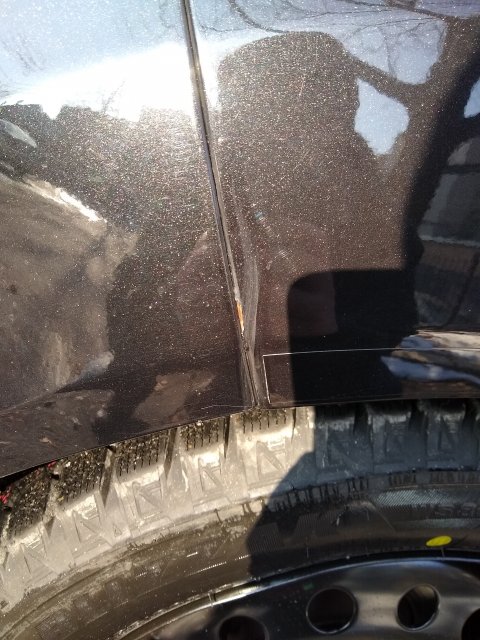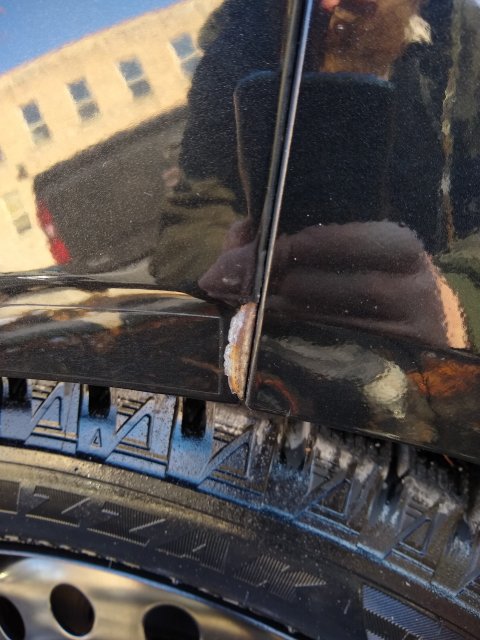-
Sign Up! To view all forums and unlock additional cool features
Welcome to the #1 Fiesta ST Forum and Fiesta ST community dedicated to Fiesta ST owners and enthusiasts. Register for an account, it's free and it's easy, so don't hesitate to join the Fiesta ST Forum today!
Sigh. Rear fender rust.
- Thread starter Larcat
- Start date
Thread Starter
#3
Looks like it got hit by something....if it was me....I'd use my Dremel and clean the Rust off and primer it & paint it.
Sent from my SM-N950U1 using Tapatalk
Sent from my SM-N950U1 using Tapatalk
Primer and paint just the area after removing the bumper cover, or..? Touch up or try and spray? I have very little background in auto body.
Attachments
-
3.7 MB Views: 85
Thread Starter
#5
Yeah I can't find a how to on rear bumper removal anywhere but I can't imagine it's _too_ hard.
I think I'll just POR it. Gunna try and do it in the next week or two.
I think I'll just POR it. Gunna try and do it in the next week or two.
If it was me....I'd be getting on it ASAP....I e never taken off the rear bumper though. Maybe another will chime in with the difficulty level. Definitely need primer and paint...if you want to Por15 i wouldn't see why not.
Sent from my SM-N950U1 using Tapatalk
Sent from my SM-N950U1 using Tapatalk
Remove the rear cover, it's the ONLY way you will stop this. The correct method to remove the rust and re-paint will take at least 1 week and may take longer. Try taking a shortcut on this repair and you'll be chasing this rust for as long as you own the car.
Step 1 is to sandblast the corroded area with the surrounding areas fully and completely masked off. Think blue plastic tarping in layers and lots of masking and duct tape to hold it in place. Note, Sears used to sell a portable sand blaster that was composed of a special bucket, hose and nozzle that would be perfect for this task. I would suggesting looking for something similar at Harbor Freight.
Step two is application of the Primer. As an extra measure of rust protection I would suggest you use a military grade zinc based galvanizing primer for the first 2 or 3 coats of primer. You should be able to find this type of primer at a body shop paint supply center. You can also occasionally find this primer at Marine supply stores and Old fashioned Auto Parts shops that work with car restorers and hot rodders.
Step 3 is the color coat and top coat. DO NOT go cheap on the paint. Use a cheap rattle can approach and that repair won't ever look right. That paint I would use is Dupont Chromaclear. While it's not cheap it is pure magic for any metallic color. The clear coat is also excellent. Tip, plan on 3 layers of clear coat, doing this will allow you to wet sand the surface to be 100% free of orange peel and have enough thickness left for a full polish. Tip 2, shoot the clear coat at a reduced temperature somewhere around 50 degrees. Doing this will slow down the curing time and that will allow the surface to self level more completely. Also lay on the clear coat a bit "thin" so you don't get a run. To be blunt, don't try for an orange peel free wet look when you shoot the clear, let the reduced cure temp do the job of leveling the surface finish.
Step 4 is the final protectant, a clear adhesive film layed on top of the fender seam where the bumper cover contacts the fender. Don't know the year of your Fist but my 2019 has some areas that are masked with this type of film to protect against rock chips. Bit of a shame that Ford didn't use the same film to protect against rubs with the front and rear bumper covers. I expect that any body shop supply would have a suitable film. If not the US Post Office sells a clear packing tape that is exceptionally tough that may be a good alternate.
Also I need to tell you that the last time I shot a clear coat finish was on my motorcycle in 1999, so the specific paints I'm suggesting may not exist anymore. However if Chromaclear is no longer made I would expect that any replacement coming from Dupont would be every bit as good or even better. You'll also want to ask for suggestions at that body shop paint supply store because I have never had to do any blending. My memory is that there is a special additive you can mix into the paint for a seamless blend.
BTW it appears to me that the rear cover has been rubbing the fender long enough to go thru the paint. There are adhesive film you can get at a body shop supplier that will prevent this from happening. However you cannot install that film until the paint is fully cured. Plan on at least 1 week for a ocmplete cure and playing it "safe" and curing to 2 weeks or more is not a bad idea.
Finally If all this seems a bit much then just take it to a very good restoration grade body shop to do the work. Yeah it may cost a grand or more but this type of repair really needs to be done properly the first time. If you don't want to do it right, just slap on some duct tap to hide the damage that will show up in a few years.
Step 1 is to sandblast the corroded area with the surrounding areas fully and completely masked off. Think blue plastic tarping in layers and lots of masking and duct tape to hold it in place. Note, Sears used to sell a portable sand blaster that was composed of a special bucket, hose and nozzle that would be perfect for this task. I would suggesting looking for something similar at Harbor Freight.
Step two is application of the Primer. As an extra measure of rust protection I would suggest you use a military grade zinc based galvanizing primer for the first 2 or 3 coats of primer. You should be able to find this type of primer at a body shop paint supply center. You can also occasionally find this primer at Marine supply stores and Old fashioned Auto Parts shops that work with car restorers and hot rodders.
Step 3 is the color coat and top coat. DO NOT go cheap on the paint. Use a cheap rattle can approach and that repair won't ever look right. That paint I would use is Dupont Chromaclear. While it's not cheap it is pure magic for any metallic color. The clear coat is also excellent. Tip, plan on 3 layers of clear coat, doing this will allow you to wet sand the surface to be 100% free of orange peel and have enough thickness left for a full polish. Tip 2, shoot the clear coat at a reduced temperature somewhere around 50 degrees. Doing this will slow down the curing time and that will allow the surface to self level more completely. Also lay on the clear coat a bit "thin" so you don't get a run. To be blunt, don't try for an orange peel free wet look when you shoot the clear, let the reduced cure temp do the job of leveling the surface finish.
Step 4 is the final protectant, a clear adhesive film layed on top of the fender seam where the bumper cover contacts the fender. Don't know the year of your Fist but my 2019 has some areas that are masked with this type of film to protect against rock chips. Bit of a shame that Ford didn't use the same film to protect against rubs with the front and rear bumper covers. I expect that any body shop supply would have a suitable film. If not the US Post Office sells a clear packing tape that is exceptionally tough that may be a good alternate.
Also I need to tell you that the last time I shot a clear coat finish was on my motorcycle in 1999, so the specific paints I'm suggesting may not exist anymore. However if Chromaclear is no longer made I would expect that any replacement coming from Dupont would be every bit as good or even better. You'll also want to ask for suggestions at that body shop paint supply store because I have never had to do any blending. My memory is that there is a special additive you can mix into the paint for a seamless blend.
BTW it appears to me that the rear cover has been rubbing the fender long enough to go thru the paint. There are adhesive film you can get at a body shop supplier that will prevent this from happening. However you cannot install that film until the paint is fully cured. Plan on at least 1 week for a ocmplete cure and playing it "safe" and curing to 2 weeks or more is not a bad idea.
Finally If all this seems a bit much then just take it to a very good restoration grade body shop to do the work. Yeah it may cost a grand or more but this type of repair really needs to be done properly the first time. If you don't want to do it right, just slap on some duct tap to hide the damage that will show up in a few years.
Last edited:
Thread Starter
#9
Wow man, thanks for the detailed post.
I'm in the Midwest and don't have a heated garage I can have access to for more than a day at a time, so I don't think that length of DIY time is in the cards.
I'll go get a shop quote.
Mine is a very early fist -- March '14 -- wondering if this going to start popping up for other folks.
I'm in the Midwest and don't have a heated garage I can have access to for more than a day at a time, so I don't think that length of DIY time is in the cards.
I'll go get a shop quote.
Mine is a very early fist -- March '14 -- wondering if this going to start popping up for other folks.
Remove the rear cover, it's the ONLY way you will stop this. The correct method to remove the rust and re-paint will take at least 1 week and may take longer. Try taking a shortcut on this repair and you'll be chasing this rest for as long as you own the car.
Step 1 is to sandblast the corroded area with the surrounding areas fully and completely masked off. Think blue plastic tarping in layers and lots of masking and duct tape to hold it in place. Note, Sears used to sell a portable sand blaster that was composed of a special bucket, hose and nozzle that would be perfect for this task. I would suggesting looking for something similar at Harbor Freight.
Step two is application of the Primer. As an extra measure of rust protection I would suggest you use a military grade zinc based galvanizing primer for the first 2 or 3 coats of primer. You should be able to find this type of primer at a body shop paint supply center. You can also occasionally find this primer at Marine supply stores and Old fashioned Auto Parts shops that work with car restorers and hot rodders.
Step 3 is the color coat and top coat. DO NOT go cheap on the paint. Use a cheap rattle can approach and that repair won't ever look right. That paint I would use is Dupont Chromaclear. While it's not cheap it is pure magic for any metallic color. The clear coat is also excellent. Tip, plan on 3 layers of clear coat, doing this will allow you to wet sand the surface to be 100% free of orange peel and have enough thickness left for a full polish. Tip 2, shoot the clear coat at a reduced temperature somewhere around 50 degrees. Doing this will slow down the curing time and that will allow the surface to self level more completely. Also lay on the clear coat a bit "thin" so you don't get a run. To be blunt, don't try for an orange peel free wet look when you shoot the clear, let the reduced cure temp do the job of leveling the surface finish.
Also I need to tell you that the last time I shot a clear coat finish was on my motorcycle in 1999, so the specific paints I'm suggesting may not exist anymore. However if Chromaclear is no longer made I would expect that any replacement coming from Dupont would be every bit as good or even better. You'll also want to ask for suggestions at that body shop paint supply store because I have never had to do any blending. My memory is that there is a special additive you can mix into the paint for a seamless blend.
BTW it appears to me that the rear cover has been rubbing the fender long enough to go thru the paint. There are adhesive film you can get at a body shop supplier that will prevent this from happening. However you cannot install that film until the paint is fully cured. Plan on at least 1 week for a ocmplete cure and playing it "safe" and curing to 2 weeks or more is not a bad idea.
Finally If all this seems a bit much then just take it to a very good restoration grade body shop to do the work. Yeah it may cost a grand or more but this type of repair really needs to be done properly the first time. If you don't want to do it right, just slap on some duct tap to hide the damage that will show up in a few years.
Step 1 is to sandblast the corroded area with the surrounding areas fully and completely masked off. Think blue plastic tarping in layers and lots of masking and duct tape to hold it in place. Note, Sears used to sell a portable sand blaster that was composed of a special bucket, hose and nozzle that would be perfect for this task. I would suggesting looking for something similar at Harbor Freight.
Step two is application of the Primer. As an extra measure of rust protection I would suggest you use a military grade zinc based galvanizing primer for the first 2 or 3 coats of primer. You should be able to find this type of primer at a body shop paint supply center. You can also occasionally find this primer at Marine supply stores and Old fashioned Auto Parts shops that work with car restorers and hot rodders.
Step 3 is the color coat and top coat. DO NOT go cheap on the paint. Use a cheap rattle can approach and that repair won't ever look right. That paint I would use is Dupont Chromaclear. While it's not cheap it is pure magic for any metallic color. The clear coat is also excellent. Tip, plan on 3 layers of clear coat, doing this will allow you to wet sand the surface to be 100% free of orange peel and have enough thickness left for a full polish. Tip 2, shoot the clear coat at a reduced temperature somewhere around 50 degrees. Doing this will slow down the curing time and that will allow the surface to self level more completely. Also lay on the clear coat a bit "thin" so you don't get a run. To be blunt, don't try for an orange peel free wet look when you shoot the clear, let the reduced cure temp do the job of leveling the surface finish.
Also I need to tell you that the last time I shot a clear coat finish was on my motorcycle in 1999, so the specific paints I'm suggesting may not exist anymore. However if Chromaclear is no longer made I would expect that any replacement coming from Dupont would be every bit as good or even better. You'll also want to ask for suggestions at that body shop paint supply store because I have never had to do any blending. My memory is that there is a special additive you can mix into the paint for a seamless blend.
BTW it appears to me that the rear cover has been rubbing the fender long enough to go thru the paint. There are adhesive film you can get at a body shop supplier that will prevent this from happening. However you cannot install that film until the paint is fully cured. Plan on at least 1 week for a ocmplete cure and playing it "safe" and curing to 2 weeks or more is not a bad idea.
Finally If all this seems a bit much then just take it to a very good restoration grade body shop to do the work. Yeah it may cost a grand or more but this type of repair really needs to be done properly the first time. If you don't want to do it right, just slap on some duct tap to hide the damage that will show up in a few years.
Scooter is right about the rust. You will need to detach the bumper cover on that side only. You can sand to bear metal vs sandblasting for such a small area. Prime and paint is needed to head off any rust on that quarter panel. Sand the primer with 600 grit sandpaper before applying the base coat. Keep the repair area small. Not a difficult repair... Good Luck!
Sent from my iPhone using Tapatalk
Sent from my iPhone using Tapatalk
Thread Starter
#11
Interesting thing is it's on both sides -- I posted the other one in a different post above. Since my fist is so early, I'm wondering if this is going to effect other cars 
Have you seen any resources/how-tos on rear bumper cover removal? I've looked but can't find anything.
Have you seen any resources/how-tos on rear bumper cover removal? I've looked but can't find anything.
Scooter is right about the rust. You will need to detach the bumper cover on that side only. You can sand to bear metal vs sandblasting for such a small area. Prime and paint is needed to head off any rust on that quarter panel. Sand the primer with 600 grit sandpaper before applying the base coat. Keep the repair area small. Not a difficult repair... Good Luck!
Sent from my iPhone using Tapatalk
Sent from my iPhone using Tapatalk
From the service manual:
Removal
All vehicles
NOTE: Removal steps in this procedure may contain installation details.
NOTE: 5-door shown, 4-door is similar.
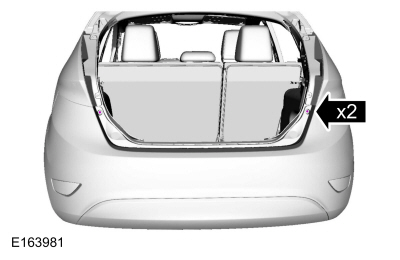
4-door
5-door
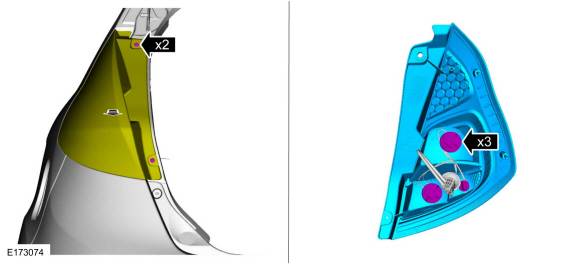
All vehicles
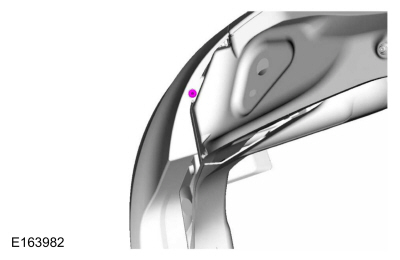
4-door
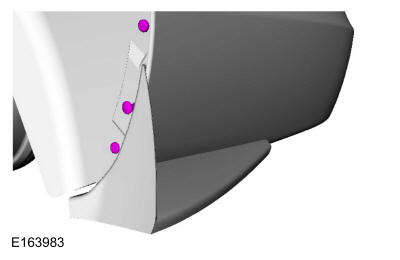
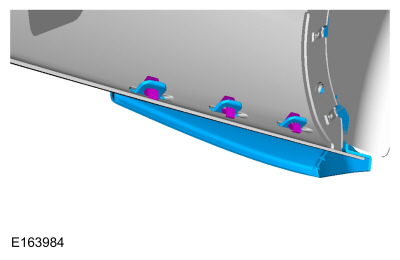
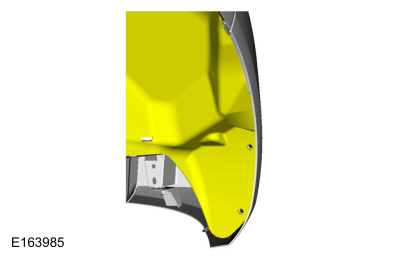
5-door
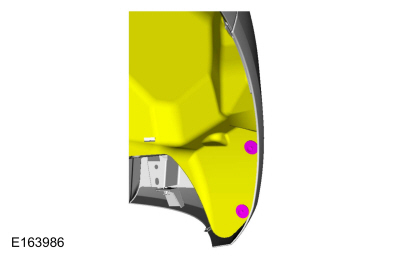
All vehicles
NOTE: 5-door shown, 4-door is similar.
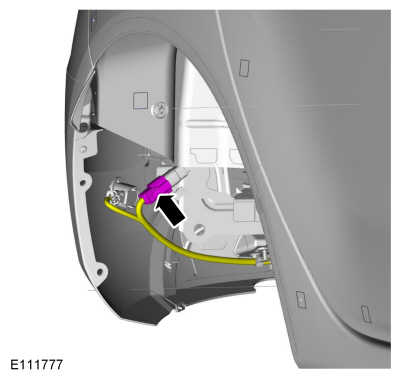
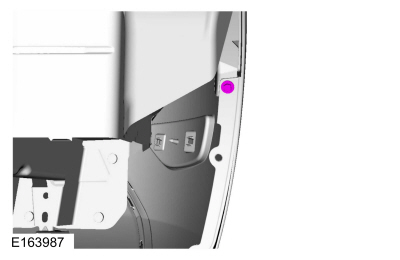
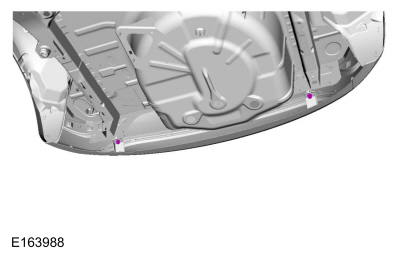
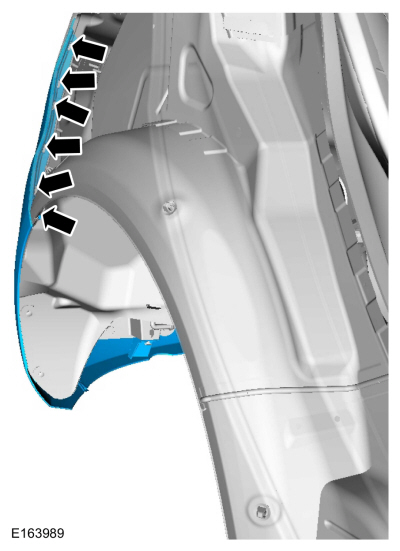
Installation
Removal
All vehicles
NOTE: Removal steps in this procedure may contain installation details.
NOTE: 5-door shown, 4-door is similar.
- Refer to: Jacking and Lifting - Overview (100-02 Jacking and Lifting, Description and Operation).

4-door
- Refer to: Rear Lamp Assembly (417-01 Exterior Lighting, Removal and Installation).
5-door

All vehicles
- NOTE: On each side.

- Refer to: Wheel and Tire (204-04A Wheels and Tires, Removal and Installation).
4-door
- NOTE: If equipped.
NOTE: On each side.

- NOTE: If equipped.
NOTE: On each side.

- NOTE: On each side.

5-door
- NOTE: On each side.

All vehicles
NOTE: 5-door shown, 4-door is similar.
- NOTE: If equipped.

- NOTE: On each side.



- Inspect the bumper cover brackets. If required install new bumper cover brackets.
Installation
- To install, reverse the removal procedure.
Thread Starter
#13
Dude, thank you!
From the service manual:
Removal
All vehicles
NOTE: Removal steps in this procedure may contain installation details.
NOTE: 5-door shown, 4-door is similar.
4-door
5-door
All vehicles
4-door
5-door
All vehicles
NOTE: 5-door shown, 4-door is similar.
Installation
Removal
All vehicles
NOTE: Removal steps in this procedure may contain installation details.
NOTE: 5-door shown, 4-door is similar.
- Refer to: Jacking and Lifting - Overview (100-02 Jacking and Lifting, Description and Operation).
4-door
- Refer to: Rear Lamp Assembly (417-01 Exterior Lighting, Removal and Installation).
5-door
All vehicles
- NOTE: On each side.
- Refer to: Wheel and Tire (204-04A Wheels and Tires, Removal and Installation).
4-door
- NOTE: If equipped.
NOTE: On each side.
- NOTE: If equipped.
NOTE: On each side.
- NOTE: On each side.
5-door
- NOTE: On each side.
All vehicles
NOTE: 5-door shown, 4-door is similar.
- NOTE: If equipped.
- NOTE: On each side.
- Inspect the bumper cover brackets. If required install new bumper cover brackets.
Installation
- To install, reverse the removal procedure.
Similar threads
-
-
-
Finally decided on wheels/tires/suspension, need insight
- Started by Fk8_FiST386
- Replies: 2
-
Little insight for a possible bad input shaft with 2 weeks left bumper to bumper warranty
- Started by zombiekillr69
- Replies: 4
-
-
-
-
-
-

